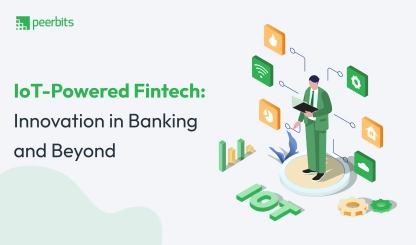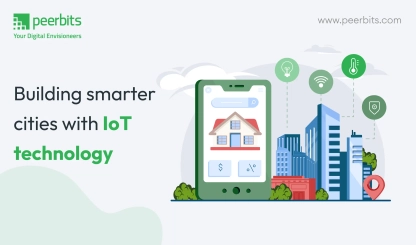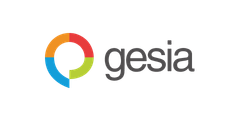IoT is changing the game in healthcare. With telemedicine and remote monitoring becoming more widespread. It is solving major challenges like making healthcare more accessible, lowering costs, and improving care for chronic conditions.
According to Precedence Research, the global IoT in healthcare market is projected to grow from USD 65.03 billion in 2025 to over USD 368.06 billion by 2034, with a CAGR of 21.24% during this period.
In this blog, explore how IoT healthcare solutions are shaping telemedicine and remote patient monitoring, highlighting its growing influence in the growing industry.
Definition of IoT in Healthcare
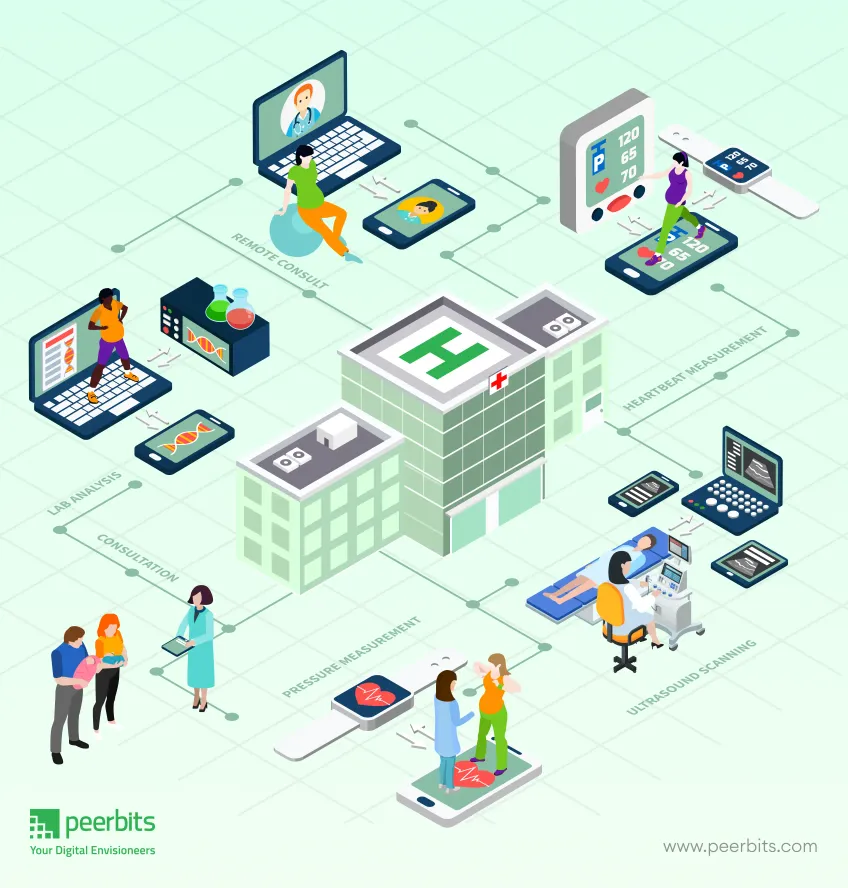
IoT in healthcare refers to the use of connected devices and sensors to collect and exchange data that can be used to improve patient care. The data collected by these devices is transmitted to healthcare providers for analysis and decision-making.
The impact of IoT in healthcare
IoT has had a significant impact on healthcare. According to a report by the World Health Organization (WHO), IoT has the potential to save lives by improving access to care, reducing medical errors, and enabling early disease detection and management.
Importance of telemedicine and remote patient monitoring
Telemedicine and remote patient monitoring are two key applications of the Internet of Things in healthcare that are transforming the way patients receive care. Telemedicine enables patients to receive medical consultations from their homes, while remote patient monitoring allows healthcare providers to monitor patient's health remotely, in real-time.
What is Telemedicine?
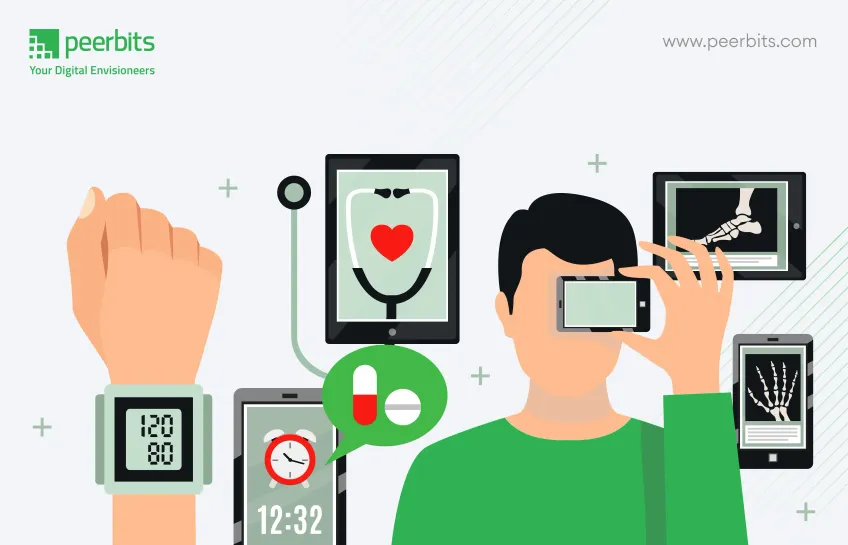
Telemedicine refers to the use of telecommunication and information technologies to provide clinical health care services remotely. This means that patients can receive medical consultations from the comfort of their homes, without needing to visit a doctor's office or hospital.
Telemedicine refers to the use of telecommunication and information technologies to provide clinical health care services remotely. This means that patients can receive medical consultations from the comfort of their homes, without needing to visit a doctor's office or hospital.
Types of telemedicine services
Telemedicine services can include virtual consultations, remote monitoring, and patient education. Some telemedicine services also offer specialized services, such as remote surgery and mental health counselling.
Advantages of telemedicine
-
Improved access to healthcare: Telemedicine has improved access to healthcare, especially for people living in rural areas or those with mobility issues. With telemedicine, patients can receive medical consultations without travelling long distances.
-
Cost-effectiveness: Telemedicine has the potential to reduce healthcare costs by eliminating the need for patients to travel to see a doctor and reducing the need for in-person appointments.
-
Improved patient satisfaction: Patients are generally more satisfied with telemedicine than traditional in-person appointments because it is more convenient and less time-consuming. Even Telemedicine app development services recieve higher request due to consumer rising demand for mHealth apps.
-
Increased efficiency: Telemedicine can help healthcare providers see more patients in a day, as virtual consultations take less time than in-person appointments.

Challenges of telemedicine
-
Reimbursement: Reimbursement for telemedicine services is still an issue, as some insurance companies do not cover virtual consultations.
-
Technical difficulties: Technical difficulties, such as poor internet connection or the need for specialized equipment, can make telemedicine difficult to implement.
-
Data security and privacy: The security and privacy of patient data is a concern with telemedicine, as sensitive information is transmitted over the internet.
What is Remote Patient Monitoring?
Remote patient monitoring refers to the use of technology, such as wearable devices, sensors, and mobile applications, to collect and transmit health data from a patient to healthcare providers, allowing for continuous monitoring and assessment of the patient's health status outside of a traditional clinical setting.
The goal of remote patient monitoring is to improve patient outcomes and reduce healthcare costs by reducing the need for in-person visits and hospitalizations, while still ensuring timely and effective care.
The Future of IoT in Healthcare
As technology continues to advance, the potential for IoT in healthcare only grows. Advancements in telemedicine and remote patient monitoring are helping to improve the delivery of healthcare services, making them more accessible and efficient for patients.
One of the most exciting developments in this field is the rise of artificial intelligence (AI). AI algorithms can help analyze vast amounts of patient data, identify patterns and make predictions about future health outcomes.
Read more: Key trends in Healthcare software development for the future
Emerging technologies in IoT healthcare
Discover the latest IoT healthcare technology stacks that are reshaping the way healthcare is delivered. Know the insights into the future of healthcare and the potential impact of these emerging technologies.
Artificial Intelligence
Artificial intelligence (AI) is a rapidly growing field that is changing the way healthcare is delivered. With AI development services, medical professionals can analyze vast amounts of patient data, identify patterns and make predictions about future health outcomes. This technology can also help medical professionals make more informed treatment decisions and deliver personalized care to patients.
Blockchain technology
Blockchain technology in healthcare is another exciting development concept in IoT. This technology provides a secure, decentralized and transparent way of storing patient health data. This allows patients to have control over their own health data and share it with their healthcare providers when necessary.
With blockchain technology, healthcare app development companies can create an advanced app that allows healthcare services providers access to a more complete and accurate picture of a patient’s health history, making it easier to provide effective treatment.
5G networks
5G networks are set to revolutionize the healthcare sector by providing fast, reliable and secure connectivity. With 5G, medical professionals will be able to remotely monitor patients in real-time, delivering rapid and effective care when it is needed most.
5G networks will also make it possible for telemedicine services to be delivered on a larger scale, providing access to healthcare for patients in remote and underserved areas.
The potential impact of IoT in healthcare
IoT brings transformative changes to healthcare, offering improved patient care, better access to medical services, and more efficient healthcare delivery through connected technologies.
Improved patient outcomes
The use of IoT in healthcare has the potential to significantly improve patient outcomes. With telemedicine and remote patient monitoring, patients can receive care in a timely and effective manner, reducing the risk of complications and improving their overall health outcomes.
In addition, the use of AI and other advanced technologies can help medical professionals make more informed treatment decisions and provide personalized care to patients.
Increased access to healthcare
IoT in healthcare has the potential to increase access to healthcare services, particularly for patients in remote and underserved areas. With telemedicine and remote patient monitoring, patients can receive care from the comfort of their own homes, reducing the need for travel and increasing access to care.
This is particularly important for older adults and people with disabilities who may struggle to travel to medical appointments.
Enhanced healthcare delivery
IoT in healthcare has the potential to enhance the delivery of healthcare services. With telemedicine and remote patient monitoring, medical professionals can provide more efficient and effective care to patients.
Read more: The Future of Healthcare: Digital Transformation Trends & Solutions
The potential of Telemedicine and Remote patient monitoring
Telemedicine and remote patient monitoring have the potential to significantly improve access to healthcare, especially for patients living in remote or underserved areas, and those with mobility issues. By enabling virtual consultations and continuous health monitoring, these technologies can help to:
- Reduce the burden on hospitals and clinics, leading to faster and more efficient care for patients
- Increase patient satisfaction by reducing the need for in-person visits and providing more convenient access to care
- Improve patient outcomes by enabling healthcare providers to detect and respond to health problems early, reducing the risk of complications and hospitalization
- Lower healthcare costs by reducing the need for in-person visits and reducing the length of hospital stays
- Increase the efficiency and effectiveness of healthcare delivery by enabling healthcare providers to access and review patient data in real-time, improving decision-making and collaboration between care teams.
In summary, telemedicine and remote patient monitoring offer significant potential to transform healthcare delivery and improve patient outcomes, while reducing costs. IoT in healthcare has the potential to revolutionize the delivery of healthcare services.
With telemedicine and remote patient monitoring, patients can receive care in a timely and effective manner, reducing the risk of complications and improving their overall health outcomes.
The use of AI and other advanced technologies is also helping to improve the delivery of care, making it more personalized and efficient.
Why choose Peerbits as your IoT app development company?
Peerbits is a trusted name in IoT app development for healthcare, specializing in telemedicine and remote patient monitoring. With years of experience and a strong grasp of the latest technologies, we can bring your ideas to life.
Our team of developers has delivered user-friendly IoT apps that meet the needs of healthcare providers and patients. We focus on improving processes and patient care.
We are committed to providing great service and support, helping you get the most out of your investment. With modern facilities and deep industry knowledge, we’re the right choice for your IoT app needs.
Contact Peerbits today to learn how we can help improve healthcare through IoT solutions.


